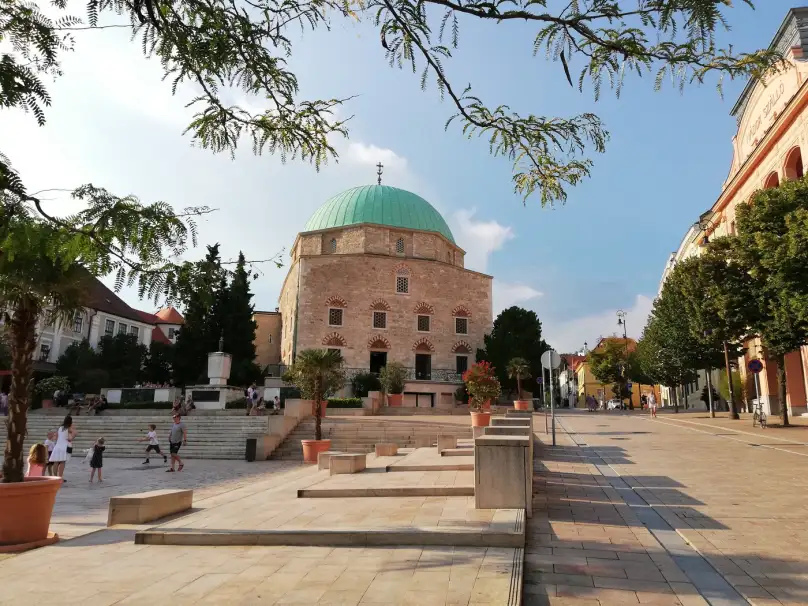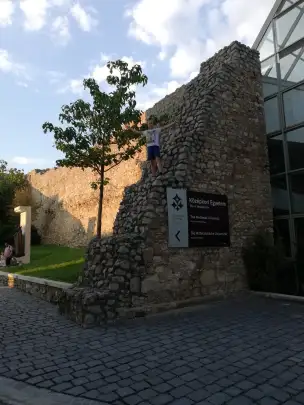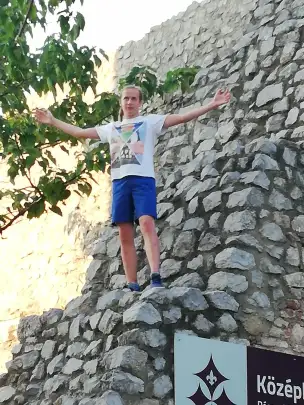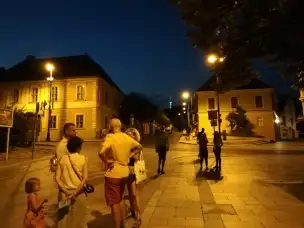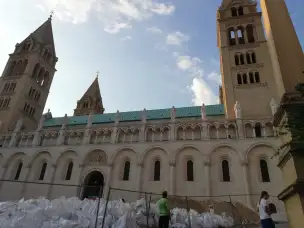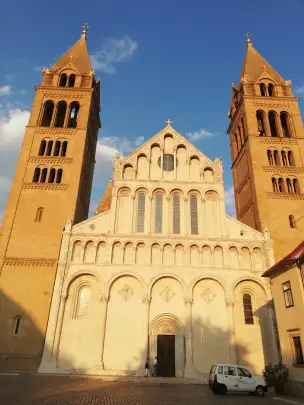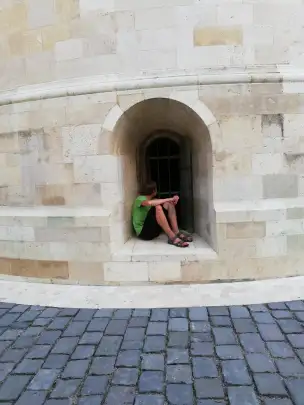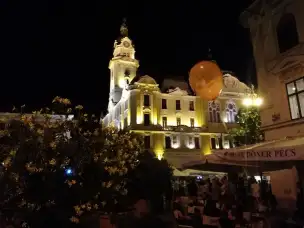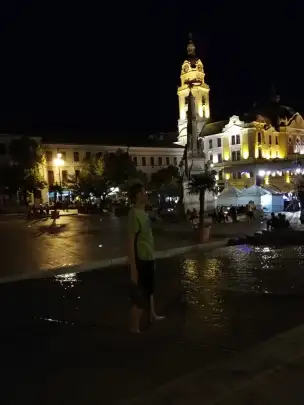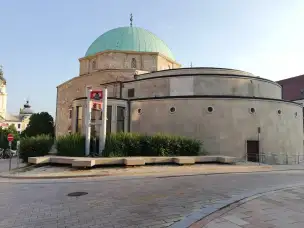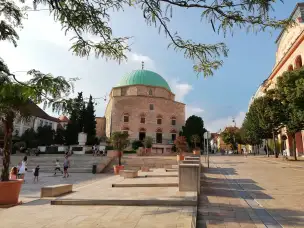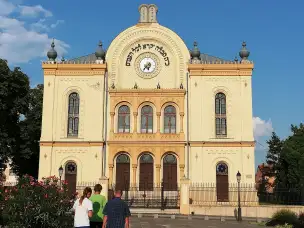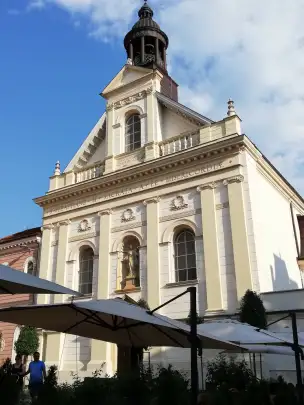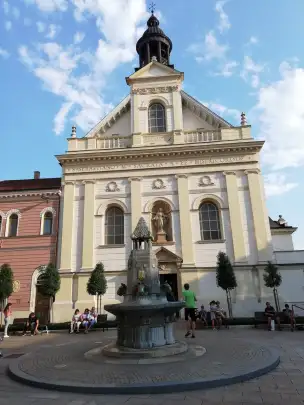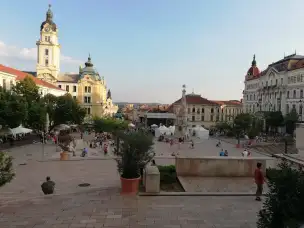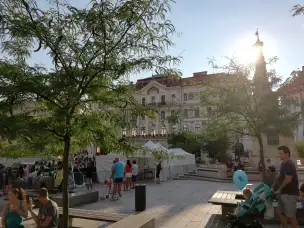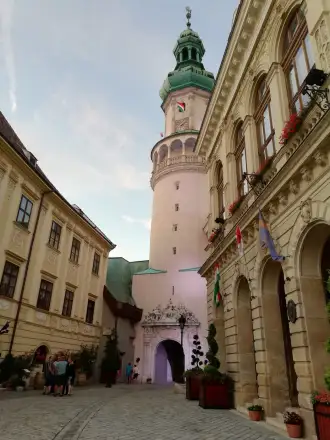A city located in southern Hungary, near the border with Croatia. It is the fifth-largest city in the country and an important cultural, educational, and tourist center.
Pécs was, without a doubt, the greatest positive surprise of my life.
Whether this was because the city is truly that wonderful or because the timing and circumstances of our visit were just right—I still don’t know.
Admittedly, Pécs lacks nothing. The city is well-kept and full of attractions: the Romanesque cathedral, a former mosque, remains of medieval fortifications, plenty of Austro-Hungarian Art Nouveau buildings, and good restaurants. But that alone doesn’t necessarily mean anything—as proven by the rather dull Hungarian Sopron or Cádiz in Andalusia outside of tourist season.
We ended up in Pécs by accident. While driving back from Croatia, we planned an overnight stay in the wine town of Villány. We had no idea that our visit would coincide with St. Stephen’s Day, when Hungarians flock to the countryside to celebrate.
In Villány, we found the hotel doors shut. The same happened at the nearby Termálfürdő spa town, so we headed to Pécs—the nearest large city.
We ended up spending St. Stephen’s Day (or rather, night) in Pécs—and Hungarians truly know how to celebrate with flair. There were concerts, street dancing, fireworks, and food stalls operating at full capacity, much like New Year’s Eve in Kraków.
When and how we returned to the hotel that night remains a mystery—but one thing is certain: Pécs made a lasting impression on us.
Pécs also has a rich history, having been a Roman settlement and later a significant city of the Hungarian Kingdom. It is home to many historical monuments, including the Romanesque Cathedral of St. Peter and Paul, the Bishop’s Palace, and a 16th-century Turkish minaret.
Pécs is known for many reasons, especially for its beautiful historic city center, known as the Zsolnay Quarter, named after the Hungarian artist and entrepreneur Vilmos Zsolnay. The Zsolnay Quarter includes several historic buildings such as the Cathedral of St. Peter and Paul, the Museum of Hungarian Folk Art and Craft, and the Town Hall. Another attraction worth visiting is the Janus Hill Mound (János-hegyi kilátó), which offers panoramic views of the city.
Cathedral of Saints Peter and Paul in Pécs
The main church of the Diocese of Pécs. The first church on this site was built in the 11th century in the Romanesque style. In the 19th century, it underwent several renovations and architectural changes in the spirit of historicism. In 1991, Pope John Paul II granted the Cathedral the honorary title of minor basilica.
The foundations of the cathedral date back to the Roman period, around the 4th century. It is believed that an early Christian basilica once stood here, which expanded westward between the 8th and 9th centuries.
St. Stephen`s Day in Pécs – Szent István napja
The celebration of St. Stephen’s Day is the most important national holiday in Hungary, held every year on August 20th. It commemorates Hungary’s first king, Saint Stephen I, who unified the country and introduced Christianity. The day is also known as Constitution Day and the Festival of the New Bread.
In Budapest and many other cities, the streets come alive with cultural festivals, musical performances, and tastings of traditional Hungarian food.
Mosque of Pasha Qasim (Gazi Kászim pasa dzsámija)
Now functioning as the Church of Our Lady of Candlemas in Pécs, it is one of the few churches in Central Europe that is oriented toward Mecca.
Interestingly, the mosque was built by the Ottomans on the site of an even older church—St. Bartholomew's Church—from the first half of the 13th century, during the reign of King Andrew II.
Synagogue of Pécs
One of only three active synagogues in Hungary, built in 1869. A distinctive feature of the façade is a clock with Hebrew inscriptions.
Church of St. Sebastian the Martyr (Order of the Brothers Hospitallers) in Pécs
Also known as the Church of Mercy, it was consecrated under the name Szent Sebestyén. Construction of the current complex began in the 18th century with the support of Ferenc Nesselrode, Bishop of Pécs. The exact date of construction is unknown, but the church took on its current eclectic form between 1887 and 1891.
The Baroque-style main altar depicts the martyrdom of Saint Sebastian, with an image of the Holy Trinity above it.
Széchenyi Square in Pécs – Széchenyi Tér
The main square in the historic center of Pécs, which served as the city’s market square in the Middle Ages, complete with a town hall and parish church. Twelve streets lead into the square.
Its main landmarks include the Mosque of Pasha Qasim, the Town Hall, Hotel Nádor, the Zsolnay Well, the Bonifratres Church, and the Holy Trinity Column.



